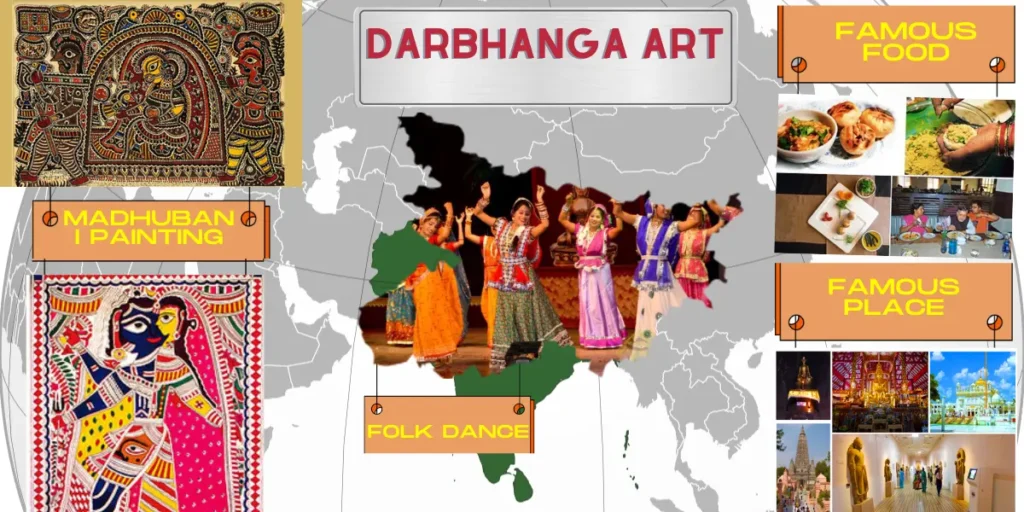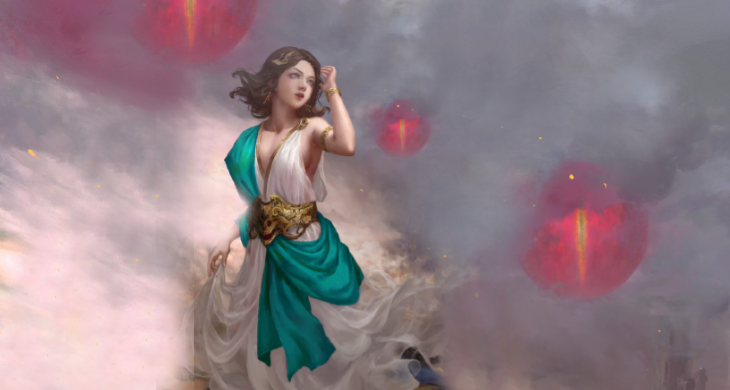Darbhanga art, also known as Mithila painting, is a traditional art form from the Bihar region of India. This vibrant and colorful painting style has a rich history and cultural significance, and is renowned for its intricate designs and attention to detail. In this article, we will explore the origins and techniques of Darbhanga art, and its enduring appeal as a symbol of Bihar’s rich cultural heritage.
Mythological Roots
The origins of Darbhanga art can be traced back from ancient times, with references to similar painting styles found in early Hindu scriptures and mythology. The story goes that Raja Janak, the king of Mithila, ordered his court artists to create paintings portraying the marriage of Lord Rama and Sita. This led to the development of a unique painting style, which became known as Mithila painting or Madhubani art.
Influence of the Mughals
In the 14th century, the Mughal Empire conquered Bihar and brought with them new techniques and materials, such as paper, ink and pigments. This led to the development of new styles and motifs in Mithila painting, as artists began incorporating Mughal influences into their work.
Revival and Recognition
In the mid-20th century, Darbhanga art experienced a revival, from the efforts of local artists and scholars. The Indian government also recognized the artistic significance of Mithila painting and began promoting as a national art form. Today, Darbhanga art is celebrated for its intricate designs, vibrant colors and cultural significance.
Materials and Tools
H2: Materials and Tools
Darbhanga art is typically painted on paper or cloth by using natural dyes and pigments made from materials like cow dung, clay and charcoal. Artists use a variety of tools including twigs, brushes, and fingers, to create the complex designs and patterns that are characteristic of this style.
Themes and Motifs
Darbhanga art often depicts themes and motifs from Hindu mythology and tradition, such as the Ramayana and Mahabharata. The paintings are known for their intricate details and bold, vibrant colors, with designs ranging from geometric patterns to depictions of animals, birds, and flowers.
Regional Variations
While Darbhanga art has a distinct style and technique, there are also regional variations in the painting style, with different villages and communities developing their own unique styles and motifs.
Cultural Identity and Heritage
Darbhanga art is an important part of Bihar’s rich cultural heritage, and is often used to express the cultural identity and traditions of the people of the region. It has also played an important role in preserving and promoting local customs and legends.
Economic Empowerment
Darbhanga art has provided economic opportunities for many artists and artisans in Bihar, supporting local communities and preserving traditional skills and techniques. Today, Darbhanga art is not only a symbol of Bihar’s cultural heritage but also an important source of livelihood for many people.
FAQs:
Q: What makes Darbhanga art unique?
Darbhanga art is unique for its intricate designs with bold colors and attention to detail formats. It also has a rich cultural history and significance,




